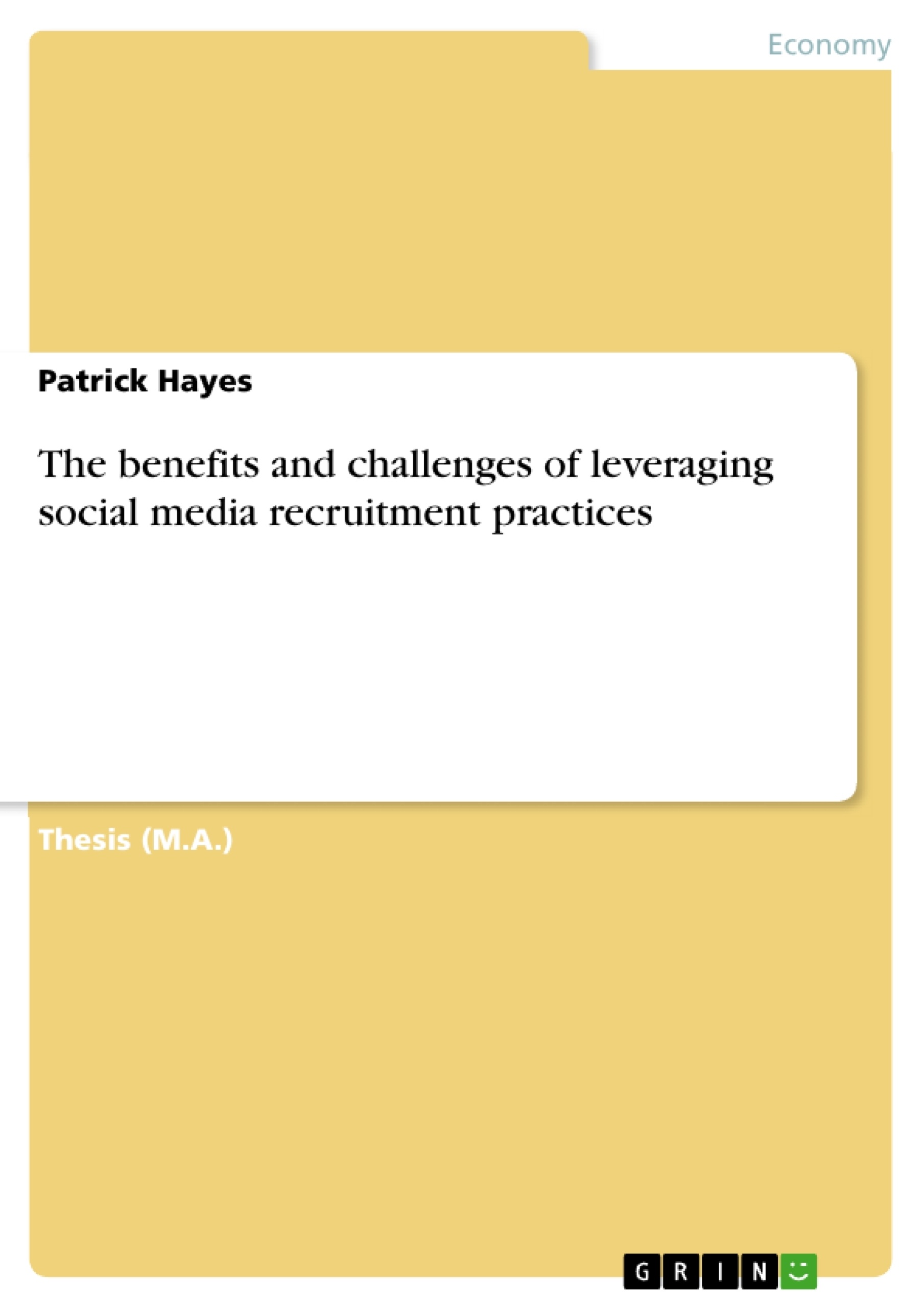In the last decade labour market shortages and recruitment difficulties have led to a more competitive and challenging recruitment market worldwide. These forces make it more important than ever for recruiting teams in organisations to be effective, efficient and creative in the search for talent. As a response, there is a shift from traditional recruiting methods to a new social recruiting approach. This paper will focus on the differences between traditional and social methods of recruiting, identify the key reasons behind the change and discuss the benefits as well as the potential risks. To measure the success of social recruiting the paper will look at reports from leading social recruiting solution companies and case studies of various sized organisations. This paper concludes that there has been a significant shift in usage from traditional recruiting techniques to social recruiting, that social recruiting is increasingly being used by both large and small organisations and is fast becoming a favoured medium of both employers and job-seekers alike. It also concludes that organisations cannot ignore the importance of creating a social recruitment strategy, owing to its role in improving cost of hire, quality of hire and time to hire. The findings are based on secondary research of academic books, journals, reports and case studies covering the areas of social media, recruitment and Linkedin. The significance of this paper is that it will be a valuable source of information for all organisations looking to leverage social recruiting - and in particular Linkedin’s hiring solutions - to start recruiting. The attached literature review as part of this study is also a good starting point for anyone looking to explore the topics of recruitment, social media and Linkedin.
Keywords: Social media, Social networking, Recruitment strategy, Linkedin
Inhaltsverzeichnis (Table of Contents)
- SECTION 1: THE CHANGING NATURE OF RECRUITING....
- 1.1: Introduction to social recruiting
- SECTION 2: DIFFERENTIATING FEATURES OF SOCIAL RECRUITING.................
- 2.1 Active and passive candidates
- 2.1.1InMail
- 2.1.2 WWU
- 2.1.3 JYMBII..
- 2.2 Talent pools vs. Talent communities.
- 2.3 Social matching and referral recruiting..
- SECTION 3: THE IMPACT OF SOCIAL RECRUITING ……………………....
- 3.1 Cost per hire
- 3.2 Quality of hire
- 3.3 Time to hire
- SECTION 4: SOCIAL RECRUITING CONCERNS........
- 4.1: Disparate impact and disparate treatment.
- 4.2: Online Misrepresentation
- 4.3: Privacy.....
- SECTION 5: MITIGATING SOCIAL RECRUITING RISKS....................
- SECTION 6: RECOMMENDED SOCIAL RECRUITING STRATEGY.
- SECTION 7: CONCLUSION.
Zielsetzung und Themenschwerpunkte (Objectives and Key Themes)
This paper examines the evolving landscape of recruitment, highlighting the shift from traditional methods to a more socially driven approach. It delves into the key differences between traditional and social recruiting, exploring the motivations behind this transformation and analyzing the benefits and risks associated with social recruitment.
- The changing nature of recruitment and the rise of social recruiting.
- Benefits and challenges of social recruiting.
- Impact of social recruiting on cost, quality, and time to hire.
- Addressing concerns surrounding social recruiting, such as privacy and online misrepresentation.
- Developing a recommended social recruitment strategy.
Zusammenfassung der Kapitel (Chapter Summaries)
The paper begins by introducing the concept of social recruiting, outlining its emergence as a response to evolving labor market dynamics. It then delves into the distinguishing features of social recruiting, differentiating between active and passive candidates, exploring talent pools and communities, and discussing the role of social matching and referral recruiting. The paper analyzes the impact of social recruiting on key metrics like cost per hire, quality of hire, and time to hire, highlighting the potential for social recruitment to improve these aspects. It also addresses concerns regarding disparate impact and disparate treatment, online misrepresentation, and privacy issues associated with social recruiting. The paper concludes by proposing strategies for mitigating these risks and developing a comprehensive social recruitment strategy.
Schlüsselwörter (Keywords)
The core focus of this paper centers around the evolving world of recruitment, with a particular emphasis on leveraging social media platforms for talent acquisition. The keywords encompass the primary terms and concepts explored throughout the paper, including social media, social networking, recruitment strategy, and LinkedIn.
- Quote paper
- Patrick Hayes (Author), 2012, The benefits and challenges of leveraging social media recruitment practices, Munich, GRIN Verlag, https://www.grin.com/document/215363



